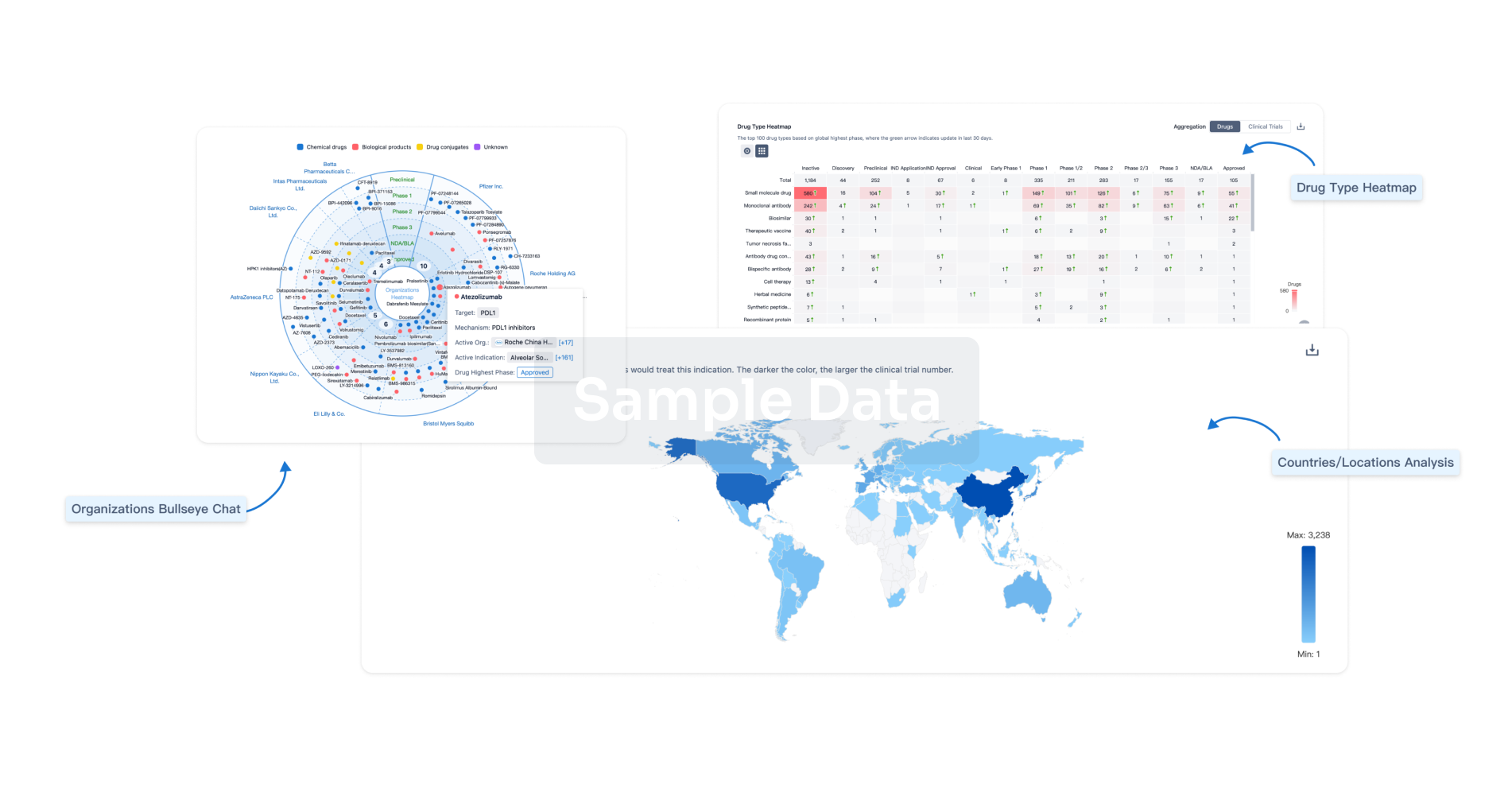Request Demo
Last update 08 May 2025
Gram Negative Pneumonia
Last update 08 May 2025
Basic Info
Synonyms Gram negative pneumonia, Gram negative pneumonia (diagnosis), Gram-negative pneumonia NOS + [14] |
Introduction- |
Related
5
Drugs associated with Gram Negative PneumoniaTarget |
Mechanism 30S subunit inhibitors |
Active Org. |
Originator Org. |
Active Indication |
Inactive Indication |
Drug Highest PhaseApproved |
First Approval Ctry. / Loc. China |
First Approval Date01 Jan 1981 |
Target- |
Mechanism- |
Active Indication |
Inactive Indication- |
Drug Highest PhasePhase 3 |
First Approval Ctry. / Loc.- |
First Approval Date20 Jan 1800 |
Target- |
Mechanism Immunostimulants |
Active Org. |
Originator Org. |
Active Indication |
Inactive Indication- |
Drug Highest PhasePreclinical |
First Approval Ctry. / Loc.- |
First Approval Date20 Jan 1800 |
27
Clinical Trials associated with Gram Negative PneumoniaCTRI/2025/03/082721
SafeBoosC IIIv - Cerebral oximetry versus standard care in newborns receiving invasive mechanical ventilation – an RCT - SafeBoosC-IIIv
Start Date30 Apr 2025 |
Sponsor / Collaborator- |
NCT06602557
" a Randomized Pilot Study of the Benefit of Nebulized Amikacin in the Treatment of Gram-negative Bacillus Pneumonia Acquired During Mechanical Ventilation in Patients Receiving Extracorporeal Membrane Veno-arterial Oxygenation (ECMO-VA). "
Pneumonia are the most frequent infectious complication in patients on Extracorporeal Membrane Oxygenation Veno-arterial (ECMO-VA), with a treatment failure rate of around 40%, even though antibiotic therapy is tailored to the germs identified. One hypothesis to explain this particularly high failure rate is the reduced pulmonary blood flow associated with ECMO offloading of the heart. Although there are no data to date on the pulmonary penetration of antibiotics in patients undergoing VA-ECMO, this phenomenon of pulmonary hypoperfusion could contribute to altering the alveolocapillary diffusion of antibiotics, thereby reducing their concentration in the pulmonary parenchyma.
Our hypothesis is that amikacin nebulization could increase bacterial clearance and, ultimately, limit treatment failure or recurrence of gram-negative bacilli (GNB) pneumonia in patients undergoing VA-ECMO.
Our hypothesis is that amikacin nebulization could increase bacterial clearance and, ultimately, limit treatment failure or recurrence of gram-negative bacilli (GNB) pneumonia in patients undergoing VA-ECMO.
Start Date15 Nov 2024 |
Sponsor / Collaborator |
CTRI/2024/07/070677
A Phase 1b/2a Open Label Bridging Safety, Pharmacokinetics and Tolerability Studies on Chloroquine Based HREZ Combination Regimens in Adults with Pulmonary Tuberculosis - NIL
Start Date24 Jul 2024 |
Sponsor / Collaborator |
100 Clinical Results associated with Gram Negative Pneumonia
Login to view more data
100 Translational Medicine associated with Gram Negative Pneumonia
Login to view more data
0 Patents (Medical) associated with Gram Negative Pneumonia
Login to view more data
392
Literatures (Medical) associated with Gram Negative Pneumonia01 Jan 2025·Journal of Ethnopharmacology
How can traditional Chinese medicine enhance the efficacy of antibiotics in the treatment of MRSA-infected pneumonia: An experimental study on the combination of Reyanning mixture (RYN) and linezolid
Article
Author: Zhang, Xin-Yu ; Wang, Xin-Ran ; Lu, Yang ; Dou, Min-Hang ; Chen, Wan-Ling ; Li, Peng-Yue ; Fan, Xiao-Yu ; Du, Shou-Ying ; Huang, Jia-Yi ; Yang, Tian-Zi ; Bai, Jie
01 Nov 2024·Clinical Pharmacokinetics
Impact of Continuous Infusion Meropenem PK/PD Target Attainment on C-Reactive Protein Dynamics in Critically Ill Patients With Documented Gram-Negative Hospital-Acquired or Ventilator-Associated Pneumonia
Article
Author: van Hasselt, Coen ; Rinaldi, Matteo ; Siniscalchi, Antonio ; Cojutti, Pier Giorgio ; Pea, Federico ; Tonetti, Tommaso ; Viale, Pierluigi ; Troisi, Carla
01 Nov 2024·Journal of the Formosan Medical Association
Microbial dynamics, risk factors and outcomes of secondary pneumonia in critically ill patients with COVID-19: A multicenter retrospective cohort study
Article
Author: Chung, Kuei-Pin ; Liu, Wei-Lun ; Hu, Geng-Ning ; Ruan, Sheng-Yuan ; Yu, Chong-Jen ; Chien, Jung-Yien ; Chang, Chia-Hao
Analysis
Perform a panoramic analysis of this field.
login
or

AI Agents Built for Biopharma Breakthroughs
Accelerate discovery. Empower decisions. Transform outcomes.
Get started for free today!
Accelerate Strategic R&D decision making with Synapse, PatSnap’s AI-powered Connected Innovation Intelligence Platform Built for Life Sciences Professionals.
Start your data trial now!
Synapse data is also accessible to external entities via APIs or data packages. Empower better decisions with the latest in pharmaceutical intelligence.
Bio
Bio Sequences Search & Analysis
Sign up for free
Chemical
Chemical Structures Search & Analysis
Sign up for free



